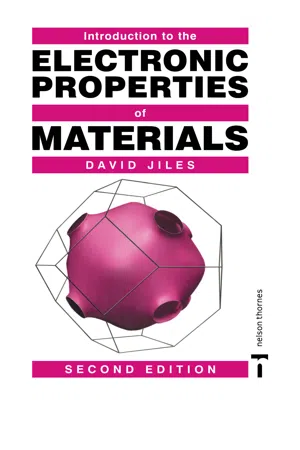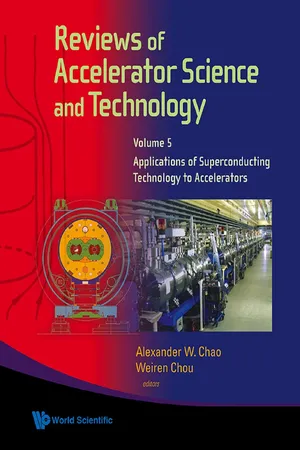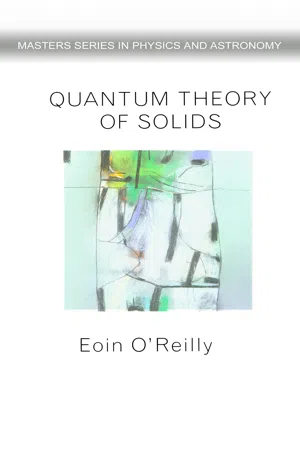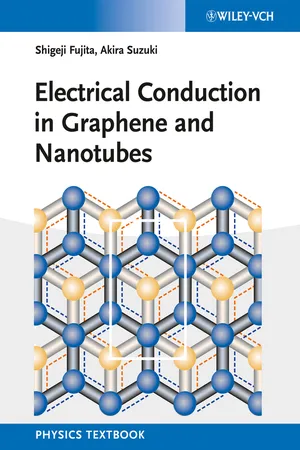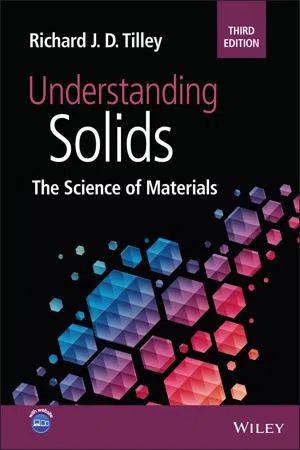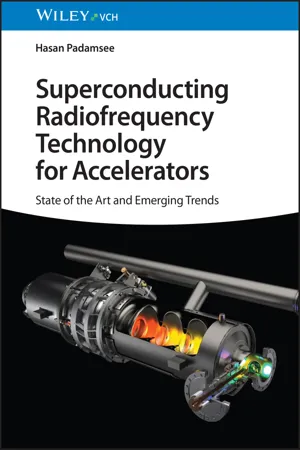Physics
Meissner Effect
The Meissner Effect is a phenomenon in which a superconductor expels all magnetic fields from its interior when it is cooled below a certain temperature, known as the critical temperature. This effect is due to the formation of superconducting currents that flow on the surface of the material, creating a magnetic field that cancels out any external magnetic field.
Written by Perlego with AI-assistance
Related key terms
Related key terms
1 of 4
Related key terms
1 of 3
8 Key excerpts on "Meissner Effect"
- Emil Zolotoyabko(Author)
- 2021(Publication Date)
- Wiley-VCH(Publisher)
The story begun in 1933, when Walther Meißner and Robert Ochsenfeld during their studies of superconducting tin and lead, discovered that the magnetic field was fully expelled from superconducting samples at temperatures T < T c (see Figure 10.8). This phenomenon earned the name of the Meissner Effect. Figure 10.8 Schematic illustration of the Meissner Effect: (a) – Expelling the magnetic field, B, from a superconductor, i.e. at T < T c ; (b) – Magnetic field lines in a normal non-magnetic metal. The phenomenological theory of the Meissner Effect was developed by two brothers, Fritz and Heinz London, in 1935. In their theory, superconducting electrons (volume density, n s) are considered as free non-colliding particles upon application of an electric field. Under constant force F = e, electrons gain kinetic energy and their velocity changes as. Recalling the definition of current density J s = en s v, we obtain the first London equation: (10.18) The next step is applying one of the Maxwell equations (see Eq. (8.3)), rot =, to the first London equation, which yields (10.19) This means that the expression in the parentheses is a time-independent function. To allow only single solution, i.e. cancelling the magnetic field in the superconductor interior (the Meissner Effect), we must impose an extra requirement: (10.20) Applying another Maxwell equation, (see Eq. (8.4)), at a constant electric field (which means that also D = const), and setting B = μ 0 H, i.e. μ m = 1, yields. Using the well-known operator transformation (as in Chapter 8), i.e. rot (rot B) = grad (div B) − (grad · grad) B, we obtain (with the aid of Eq. (8.10)) the differential equation for spatial distribution of a magnetic field B within a superconductor: (10.21) with (10.22) In the one-dimensional case, Eq. (10.21) provides an exponentially decaying magnetic field in the superconductor bulk (along the z -direction): (10.23) where B 0 is the magnetic field at the semiconductor surface (z = 0)- David C. Jiles(Author)
- 2017(Publication Date)
- CRC Press(Publisher)
φ passing through the material because by the Faraday-Lenz law of electromagnetic induction they would set up an induced current. In a perfect conductor this induced current should produce an opposing flux change which exactly counteracts the flux change producing it. In fact, the situation is quite different inside a superconductor in its superconducting state. The magnetic flux ∅ is zero, except for a thin boundary layer at the surface. (We must note immediately that this condition is not exactly fulfilled in the mixed state because of the prescence of normal material.) The Meissner Effect does, however, demonstrate that the superconducting state is something more than just a state with perfect conductivity, since the exclusion of flux is an additional property that a merely resistanceless material would not possess.Figure 13.4 Diagram showing the expected behaviour of a ‘perfect conductor’ in the presence of a field.13.2.5 Surface currents and the Meissner Effect
How can we explain the Meissner Effect?When a superconductor is cooled in a magnetic field persistent currents arise on the surface of the material at the critical temperature and these circulate so as to exactly cancel the flux density inside. The surface supercurrents are determined only by the strength of the external prevailing magnetic field.Figure 13.5 Equivalent behaviour of a superconductor (compare with Fig. 13.4 ) which exhibits the Meissner Effect or flux exclusion.The emergence of the surface currents when a material is cooled through its superconducting transition lies beyond the concept of ‘perfect’ conductivity. In order not to get an infinite current density, these surface currents must exist over a finite depth. In fact, the surface currents decay exponentially with depth, and this means that the magnetic field does penetrate at the surface of the superconductor to some extent. This is expressed by the penetration depth λ. Typical penetration depths in superconductors are 10−8 m. Some values are shown in Table 13.2- eBook - ePub
Reviews Of Accelerator Science And Technology - Volume 5: Applications Of Superconducting Technology To Accelerators
Volume 5: Applications of Superconducting Technology to Accelerators
- Alexander W Chao, Weiren Chou(Authors)
- 2013(Publication Date)
- WSPC(Publisher)
The Meissner Effect is one of the most fundamental properties of superconductivity, resulting from the Bose condensation of the Cooper pairs (electrons with antiparallel momenta and spins glued together by lattice vibrations — phonons) and the appearance of the energy gap in the spectrum of quasiparticles. In the BCS theory is proportional to the binding energy of the Cooper pairs, where k B is the Boltzmann constant [ 31 ]. The surface resistance results from the rf dissipation in a thin, ~100nm layer determined by the London penetration depth λ, over which a low-frequency magnetic field penetrates in a superconductor (for the cavity-grade niobium, λ ≈ 40 nm at 2K). It is the materials and superconducting properties of this thin layer (much thinner than the 2–3-mm-thick cavity wall) at the inner cavity surface which control the SRF performance. The atomic and chemical structure of this surface layer has been studied by different techniques, including transmission electron microscopy (TEM) [ 51 ], X-ray photoelectron spectroscopy [ 52 – 54 ] (XPS), atom probe tomography [ 56, 57 ] and electron energy loss spectroscopy (EELS) [ 58 ]. For instance, the TEM shown in Fig. 2 reveals a complex structure consisting of a 2–4-nm-thick layer of niobium oxides and suboxides followed by a several-nm-thick transitional zone and disordered region with enhanced concentration of atomic defects such as vacancies, or oxygen, carbon or hydrogen impurities. The detailed physics and materials mechanisms by which the atomic structure of this surface layer affects superconducting properties and supplies impurities which diffuse to a thicker, ~100nm layer of the rf field penetration [ 59 ] are not well understood - J.C Gallop(Author)
- 2017(Publication Date)
- CRC Press(Publisher)
H isB =μ 0H +μ 0χ H(1.1) so that in a superconductor the Meissner Effect requires that B = 0 and χ = –1. This macroscopic perfect diamagnetism is achieved by a super-current flowing with no dissipation in a thin surface layer of the material, taking up such a distribution that it sets up an equal and opposite field to that which is applied at all interior points in the superconductor, so screening it out completely. Figure 1.1 shows schematically how the flux density varies through a cross section of a superconductor, with the field being attenuated in a surface layer of thickness λ (known as the magnetic penetration depth). If the external field is increased to the critical value Hc (T) superconductivity is destroyed, the screening currents vanish and the field penetrates the material again.Figure 1.1 Attenuation of magnetic field into superconductorThe Meissner Effect was first explained using the two-fluid model (section 1.3 ) and a pair of electrodynamic relationships, derived by London (1950). We shall first give another derivation based on the macroscopic quantum nature of superconductivity (section 1.6 ), before returning to the phenomenological description in section 1.8 .1.2.1 Temperature dependence of superconducting propertiesAt Tc the critical field for a superconductor is vanishingly small, rising as the temperature falls, tending asymptotically to a maximum value at T = 0 K. Similar behaviour is shown by the supercurrent-carrying capabilities. The penetration depth is infinite at Tc- eBook - ePub
- Eoin O'Reilly(Author)
- 2017(Publication Date)
- CRC Press(Publisher)
B is given byB =μ 0(= 0)H+ Me x t( 8.3 )where M is the magnetisation due to the induced surface currents and H ext the externally applied field, so that M = −H ext , andχ = M / H = − 1( 8.4 )Figure 8.3 Comparison of the magnetic behaviour of (a) a perfect conductor and (b) a superconductor. (i) Above a critical temperature,T c , both are in the normal state, and an applied static magnetic field penetrates the metal. (ii) On cooling below T c the magnetic field remains unchanged inside the perfect conductor, but is screened out inside the superconductor, due to surface currents induced below T c . (iii) When the applied field is turned off, surface currents would be induced to maintain finite B inside the perfect conductor. By contrast, the field B is then zero inside and outside the superconductor.8.4 Type I and Type II superconductors
The response of a superconductor to an increasing external field, H ext , can be divided into two broad categories, referred to as Type I and Type II superconductors. In a Type I superconductor, the magnetic flux suddenly penetrates into the superconductor at a critical field,H = H c , above which field the material reverts from the superconducting to the normal state. For a pure material this is a reversible transition, with the magnetisation then behaving as in fig. 8.4 (a). For a type I superconductor, the critical field at 0 K is typically ˜ 10–100 mT, and varies with temperature (fig. 8.4 (b)) asFigure 8.4 (a) Induced magnetisation,M , as a function of applied field,H , in a Type I superconductor. At H = H c , the superconductor reverts to the normal state, so that above H c ,M ˜ 0. (b) Variation of critical field B c = µ 0 H c - eBook - ePub
- Shigeji Fujita, Akira Suzuki(Authors)
- 2013(Publication Date)
- Wiley-VCH(Publisher)
Chapter 7
Superconductivity
We describe the basic properties of superconductors, occurrence of superconductors, theoretical background, and quantum statistical theory of superconductivity in this chapter.7.1 Basic Properties of a Superconductor
Superconductivity is characterized by the following six basic properties: zero resistance, Meissner Effect, magnetic flux quantization, Josephson effects, gaps in elementary excitation energy spectra, and sharp phase change. We shall briefly describe these properties in this section.7.1.1 Zero Resistance
The phenomenon of superconductivity was discovered in 1911 by Kamerlingh Onnes [1], who measured extremely small electric resistance in mercury below a certain critical temperature Tc (≈ 4.2 K). His data are reproduced in Figure 7.1 . This zero resistance property can be confirmed by the never-decaying supercurrent ring experiment described in Section 7.1.3.Figure 7.1Resistance (in ohm) versus temperature (in kelvin), after Kamerlingh Onnes [1].7.1.2 Meissner Effect
Substances that become superconducting at finite temperatures will be called superconductors. If a superconductor below Tc is placed under a weak magnetic field, it repels the magnetic field B completely from its interior as shown in Figure 7.2a . This is called the Meissner Effect, which was discovered by Meissner and Ochsenfeld [2] in 1933.Figure 7.2The Meissner Effect. (a) A superconductor repels a weak magnetic field from its body below the transition temperature (T < Tc ) while (b) at a temperature above the transition temperature (T > Tc ) the magnetic field penetrates its body.The Meissner Effect can be demonstrated dramatically by a floating magnet as shown in Figure 7.3 . A small bar magnet above Tc simply rests on a superconductor dish. If the temperature is lowered below Tc , then the magnet will float as indicated. The gravitational force exerted on the magnet is balanced by the magnetic pressure (part of the electromagnetic stress tensor) due to the nonhomogeneous magnetic field (B - eBook - ePub
Understanding Solids
The Science of Materials
- Richard J. D. Tilley(Author)
- 2021(Publication Date)
- Wiley(Publisher)
unconventional superconductors. These cannot be explained by the BCS theory and there is as yet no overall theoretical understanding of the way these materials behave.11.5.2 The Effect of Magnetic Fields and Current
When a superconductor is cooled in a magnetic field, it expels the magnetic induction, B, in its interior. This is called the Meissner Effect. Ideally this expulsion is complete so that a superconductor behaves as perfectly diamagnetic (Figure 11.27 ). In effect, in the superconducting state a surface current is produced that is sufficient to generate an internal magnetic field that exactly cancels the magnetic induction. This current also distorts the external magnetic field so that it does not penetrate the superconductor, which is thus screened. The surface current is confined to a thin layer, called the penetration depth, varying between 10 and 100 nm.The Meissner Effect: (a) normal metal or superconducting metal above Tc ; (b) superconducting metal below Tc ; (c) surface currents induced in a superconductor.Figure 11.27The exclusion of the magnetic induction costs energy, and when that cost outweighs the energy gained by the formation of the superconducting state, the material reverts to normal behaviour. This occurs at a critical field, Hc , in Type I superconductors. The value of the critical field, Hc , is temperature dependent so that a phase boundary can be mapped out in H − T phase space (Figure 11.28 a). The relationship between Hc and the critical temperature, Tc , is given by an approximate equation:(11.5)where Hc (0) is the critical magnetic field2 at 0 K, and T is the absolute temperature.The variation of superconductivity with external magnetic field: (a) Type I superconductor; (b) Type II superconductor.Figure 11.28In many superconductors the transition between the superconducting and normal state is not sharp. When the external magnetic field reaches some lower critical magnetic field value, Hc1 , filaments of magnetic flux start to penetrate the material to produce threads that are no longer superconducting (Figure 11.29 ). The small regions of normal material are isolated from the superconducting matrix by surface currents, called vortices or fluxoids, which act to repel each other, so that the flux lines form an ordered structure called a fluxon lattice, flux lattice, or vortex lattice - eBook - ePub
Superconducting Radiofrequency Technology for Accelerators
State of the Art and Emerging Trends
- Hasan Padamsee(Author)
- 2023(Publication Date)
- Wiley-VCH(Publisher)
The first London equation also implies that when the current is constant in time, as in the case of dc, there is no electric field inside the superconductor, and conduction takes place without losses. (2.5) Equation (2.5) should be contrasted with the conductivity equation for a normal metal or Ohm’s Law. In the Drude formulation [ 46, 47 ] (2.6) (2.7) where τ is the average time between collisions or the electron relaxation time, m the electron mass, ℓ is the electron mean free path, and v F is the Fermi velocity. 2.3.2 Meissner Effect Using Maxwell’s equations with the London equations, we derive the Meissner Effect. Starting with Maxwell’s equation (2.8) Apply the curl (2.9) Using the second London equation for B, (2.10) Since ∇ · B = 0, this leads to a wave – type differential equation (2.11) where (2.12) λ L is defined as the London penetration depth. (The value is 39 nm for high-purity niobium.) In the case of a semi-infinite superconducting slab that occupies the space z > 0, the solution to Eq. (2.11) is (2.13) which states that the parallel component of the B field decays exponentially with distance from the surface, to satisfy B = 0 inside the superconductor. This is the Meissner Effect. There are several consequences of the Meissner Effect – important for Chapter 4. When a superconducting material is cooled through its transition temperature, T c, in the presence of an external dc magnetic field, the magnetic flux is abruptly expelled from the volume of the superconductor when the ideal conditions are fulfilled. (As we will see for Nb cavities, this condition is met only in certain circumstances.) The second aspect of the Meissner Effect: An externally applied magnetic field (less than the critical field) cannot penetrate into the interior of a superconductor when it is below T c. The field is excluded from the volume of the superconductor. A metal in the superconducting state therefore never allows magnetic flux density to exist in the interior
Index pages curate the most relevant extracts from our library of academic textbooks. They’ve been created using an in-house natural language model (NLM), each adding context and meaning to key research topics.
Explore more topic indexes
Explore more topic indexes
1 of 6
Explore more topic indexes
1 of 4

